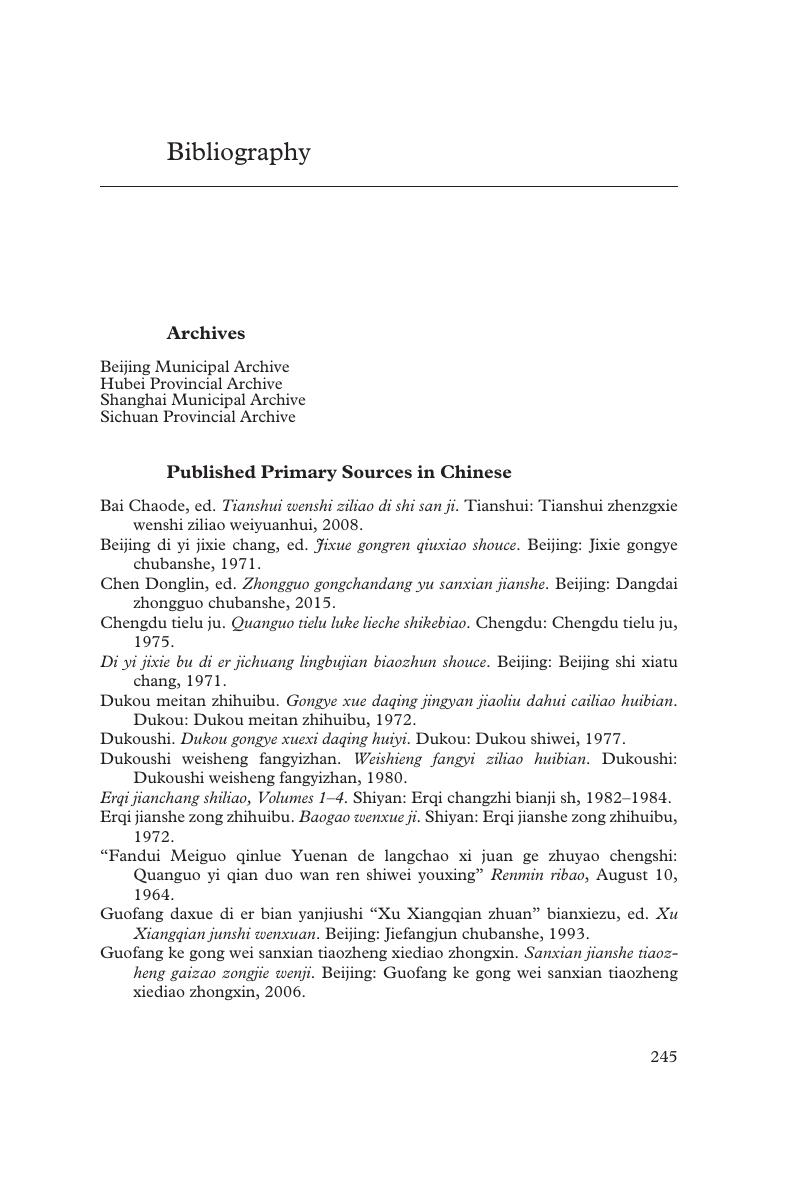Book contents
- Mao’s Third Front
- Mao’s Third Front
- Copyright page
- Contents
- Tables
- Figures
- Maps
- Abbreviations
- Acknowledgements
- Introduction
- 1 The Coming of the Third Front Campaign
- 2 Good People and Good Horses Go to the Third Front
- 3 Concentrating Forces to Wage Wars of Annihilation
- 4 Produce First and Consume Later
- 5 Industrial Development amid Cold War Insecurity
- Epilogue: The Demilitarization of Chinese Socialism
- Appendix: Third Front Demographics
- Bibliography
- Index
- References
Bibliography
Published online by Cambridge University Press: 24 April 2020
- Mao’s Third Front
- Mao’s Third Front
- Copyright page
- Contents
- Tables
- Figures
- Maps
- Abbreviations
- Acknowledgements
- Introduction
- 1 The Coming of the Third Front Campaign
- 2 Good People and Good Horses Go to the Third Front
- 3 Concentrating Forces to Wage Wars of Annihilation
- 4 Produce First and Consume Later
- 5 Industrial Development amid Cold War Insecurity
- Epilogue: The Demilitarization of Chinese Socialism
- Appendix: Third Front Demographics
- Bibliography
- Index
- References
Summary

- Type
- Chapter
- Information
- Mao's Third FrontThe Militarization of Cold War China, pp. 245 - 271Publisher: Cambridge University PressPrint publication year: 2020



